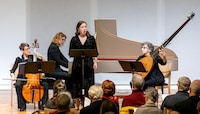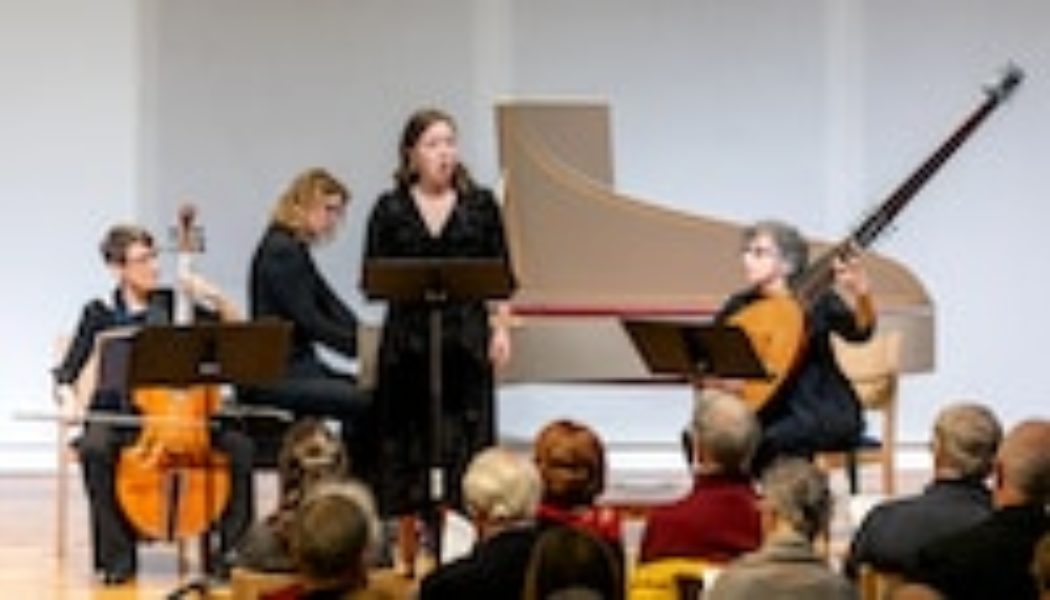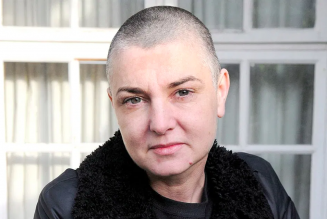
On Friday evening at Live at 10th and G (the performance venue alter-ego First Congregational United Church of Christ), a quartet of players from the Washington Bach Consort offered an overdue and richly researched history lesson on female composers of the 17th century. Of course, if you were just listening along instead of minding your program notes, they delivered an hour or so of extraordinary music.
Devised and performed by researcher and soprano Paulina Francisco, “Women of the Baroque: Canoro pianto et affetti” assembled an assortment of sacred and secular works by “seven (maybe eight!)” composers who lived, worked and made music in the courts, academies and convents of 17th-century Italy.
Composers including the Florentine Francesca Caccini (a.k.a. “La Cecchina”), Barbara Strozzi, the Milanese nun Claudia Sessa, Caterina Assandra, Chiara Margarita Cozzolani and Isabella Leonarda were all represented. “In all my years studying women composers,” Francisco writes in her program notes, “there has never been an opportunity to feature their work so densely on a single program.”
It was also a fine opportunity to hear three of the consort’s strongest players in a concentrated, intimate musical setting. Harpsichordist Paula Maust brought light, elegant, attentive playing, especially so on “Chi è costei,” one of three selections from Caccini’s 37-piece “Il libro primo delle musiche,” dating from 1618.
Joanna Blendulf on viola da gamba was a standout in a splendid account of Leonarda’s “Sonata Op. 16, No. 12,” lending earthy depth and texture to a part typically handled by a violinist. And lutenist Deborah Fox was a treat on theorbo, which several times (especially in Cozzolani’s “Jesu Meus Amor”) revealed itself as a sort of ancestral banjo.
But it was largely Francisco’s spotlight on Friday (the program was repeated on Saturday at St. Paul’s in Alexandria). She brought intuition, sensitivity and no small measure of courage to the complex ornamentation of Strozzi’s “Mater Anna.” Her closeness to the material was evident in a soaring reading of “O già della mia mano” — a selection of uncertain authorship from the 1613 multi-composer print collection “Canoro pianto di Maria Vergine sopra la faccia Christo Estinto.” And she embodied the dramatic turns of “L’amante segreto” — a secular lament over unrequited love, its sting sharpened by Francisco’s aching refrain: “I would rather die/ than let my pain be discovered.”
This was a rich and richly varied program that hinted at much, much more. According to Francisco, the composers represented no less than 30 print collections of solo songs, cantatas, motets, polyphonic works, settings for psalms and masses, a magnificat, a vespers service, a dozen sonatas, and scores for nine operas and other staged works.
In several senses, the neglected work of female composers is an unexplored embarrassment of riches. Kudos to the Bach Consort for stepping up and digging deep. Next up for the Consort (apart from some noontime cantatas) is a performance of Haydn’s “Die Schöpfung (The Creation)” on April 21.
Elsewhere in densely researched good times, a similar spirit of recovery as discovery animated “Music of Medieval Spain,” the Folger Consort’s weekend offering on Saturday at the Folger Shakespeare Library.
The program was an effort by artistic directors Robert Eisenstein and Christopher Kendall to momentarily unify the three distinct musical cultures that defined medieval Spain: Along with a well-represented Christian tradition, there exists a rich history of Sephardic Jewish music in diaspora, following their expulsion from the country in 1492. At the same time, a parallel tradition of Islamic music thrived across the Iberian Peninsula — introduced here through a suite of Arab-Andalusian sung poems and traditionals.
The coexistence of these three traditions in proximity, though sometimes uneasy, produced a fruitful yield of poetic forms, compositional theories and even musical instruments that would shape European arts and music in the centuries to come — e.g., in the name of the pear-shaped al-oud, you can detect the origin of the Renaissance lute.
By turns, the two-part program identified these traditions and dovetailed them into miniature suites. But the eight-piece Folger ensemble also managed to capture some of the electric energy between these seemingly disparate musical histories — connections lost and found in translation.
Eisenstein led the group, playing vielle (a longer, deeper early violin) and rebec (a narrow, boat-shaped string instrument), and smartly augmented its ranks with the addition of Ronnie Malley on oud, Naeif Rafeh on nay (a long bamboo flute) and Firas Zreik on kanun (a traditional Arabic box zither with wide microtonal range).
Karen Burciaga buttressed Eisenstein on vielle with clear, confident playing; the multitasking percussionist Dan Meyers seized attention several times with turns on bagpipe; and vocalists Drew Minter and Emily Noël brought powerful singing, occasional comic relief and delightfully human spirit to the music, overcoming its built-in distance with a celebratory embrace. (Minter also lent hands to the harp here and there.)
Many of the evening’s highlights were vocal. Malley’s leadership of several pieces and interludes relied on the careful threading of his voice through the music — an effort aided by Zreik’s incredible facility on kanun, which as readily supported his fellow players as ran off on its own glimmering solo courses.
Projections overhead guided us through the text and illustrations of the “Cantigas de Santa Maria,” a collection of more than 400 songs praising the Virgin Mary that was assembled for the court of Alfonso the Wise in the mid-13th-century. They cover tales both short and tall — such as the one about the angry gambler who shot an arrow at heaven; or the one where Mary herself becomes consumed with jealousy; or the one where she miraculously inspires a pork chop to dance (that one turned into a singalong).
The “Cantigas” were packaged with Sephardic Moroccan traditionals (such as “Dezile al mi Amor” and the spirited “Bellida”) as well as powerfully beautiful settings of Arabic poetry (such as “Jadak al-Ghaithu,” a muwashshah dating from the 14th century) into a trio of waslas — an Arabic term a for a set of musical pieces.
This assertive approach to mixing wasn’t nearly as jarring as you might expect — the Folger players maintained a delicacy and attention to the music that made it all sound cut from the same cloth without feeling stitched (or knotted) together. Here too was an unlikely but happy coexistence — a guide from the distant past on how to listen to the present.









